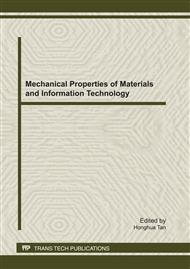p.421
p.429
p.436
p.439
p.444
p.451
p.456
p.461
p.467
The Effect of Airflow Patterns on the Purification Efficiency of the Operating Room
Abstract:
There are two unidirectional patterns in OR: horizontal unidirectional airflow and vertical unidirectional airflow. In order to compare their purification effect, computational fluid dynamics (CFD) was applied to simulate the two airflow patterns and the results are as following: Firstly, the number of the particles that hit the surgical key areas in the case of the horizontal unidirectional airflow is obviously less than that in the case of the vertical unidirectional airflow in the condition of the same air volume. Secondly, the number of the particles that hit the incisions will be satisfactory at a velocity of 0.25~0.3m/s in the case of the vertical unidirectional airflow while a velocity of 0.28~0.37m∕s in the case of the horizontal unidirectional airflow. Thirdly, the number of indoor residual particles in the case of the horizontal airflow is obviously less than that in the case of the vertical airflow in the case of the same air volume.
Info:
Periodical:
Pages:
444-450
Citation:
Online since:
September 2011
Authors:
Price:
Сopyright:
© 2012 Trans Tech Publications Ltd. All Rights Reserved
Share:
Citation:


